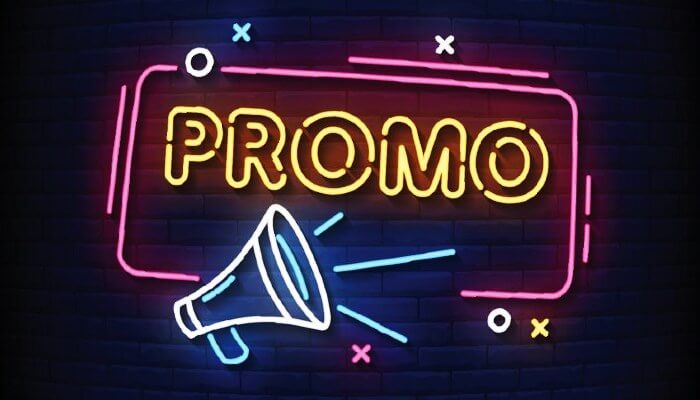Promotions and Discounts as a Marketing Tool: How Do They Influence Sales?

Promotion equals
discounts. Most readers will smile skeptically at this phrase.
As practice shows, 9 out of 10 people take advantage of promotional offers, and 7 out of 10 do not check how valid the promotion is, using it as a trigger to buy things they don't need.
The systematic use of the term "promotional offer" began in the United States in the 18th century. It evolved from verbal agreements where you could haggle for a discount.
Since then, merchants have used this tool to increase the number of goods sold or to get rid of slow-moving inventory. The concept of "promotion" came to US in the early 2000s as part of Western integration.
The naivety of Americans sometimes allowed goods under the "promotion" sign to be sold not only cheaper but even more expensive than before.
Promotions are not about "ratios," but about "emotions." You might not plan to buy an item, product, or merchandise. But you see the bright "Promotion" sign, with discounts of 50% or even 70%. Naturally, there is a desire to take advantage of such a unique offer, which might not be repeated.
It's like seizing an opportunity, getting something you've dreamed about but which doesn't affect your quality of life. It's a common psychological trick that relies on people's emotions.
Like most Americans, I've repeatedly fallen for promotional prices that had nothing to do with the best offer. Only the bright "Promotion!" sticker. Yes, have you noticed, it's always bright? Often, when you tear off the old price tag, you see the same "before" price.
Promotion is a pragmatic business process, both in the premium and economy segments.
A discount really increases the volume of sales of goods or services in a specific period. Promotions were often used to clear shelves of old goods, or those soon to expire or lose their appearance.
Now, it is also a marketing tool to stimulate the buyer to pay attention to your offer among dozens of others.
Promotions work for both economy-category and premium-segment products. Usually, a well-designed proposal boosts sales by 25% and sometimes even doubles or triples them.
An interesting case before the war was real estate - it seems strange that it would increase the percentage of closing contracts. But it happened: a cool offer about a longer installment period, a balcony as a gift, or a reduction in the cost per square meter resulted in an increase in both potential buyers by 15-55% and actual sales up to 20%.
As you can see, the number of those interested and those who bought is significantly different, but the promotion works, and the business does not lose anything. This is a win-win story.
Reverse Effect: Avoid Becoming a "Promotion Sink"
One sports club continuously runs a promotion to encourage the purchase of a season ticket, but since this "promotion" runs year-round, it is unclear if there is ever a price outside of the promotion.
Such an offer is ineffective, outdated, and fails to attract customers. When compared to other sports clubs, you might find better deals.
Promotional offers have sometimes become emotionally and marketing-wise redundant. Initially, the idea was to provide genuine discounts, but "fake promotions" emerged, luring customers with false discounts, prompting more serious companies to move away from this tool.
Remember the trend of plastic loyalty cards that filled wallets and signified status as a customer of a reputable store, company, or restaurant? Eventually, promotional offers returned and became standard across all segments, from premium real estate and cars to everyday goods.
In my research across various verticals, companies with local or global recognition truly offer interesting, limited-time deals, boosting both ad engagement and actual sales growth.
Using promotions is now the norm, but it's crucial not to turn your business into a "promotional sink," where no one knows the real price of your product and won't buy anything unless they see a "promotion."
A global trend in digital marketing, combining artificial intelligence (AI) and automation, now processes large amounts of data quickly, finding potential buyers for products or services. Here, the promotion acts as a key element to stimulate sales.
Interestingly, early promotions were straightforward discounts meant to boost purchases. Today, promotional offers are more complex, including additional services, extra units of goods, or installment plans. These allow sellers to attract customers long-term through bonus services and future upselling.
How to Approach Promotions Rationally
Working in internet marketing has taught me to verify the reality of offers and track promotional item prices over time. Times have changed, and there are fewer dishonest promotions now as consumers have become savvier. Genuine promotions are more common.
Promotions often play on emotions, especially with household items. Some people are more susceptible to emotional influence than others. Here are some rules for those who, like me, are attracted to promotions but don't want to be deceived:
1. If you didn't plan to buy the product, ignore the promotional offers.
2. After seeing a promotion, check the price online to see if it's genuinely a good deal.
3. For "1+1=3" offers, consider if you really need multiple items. Remember what you already have at home.
4. Trust recognizable companies as they usually offer real promotions.
5. If you want to buy something new at a lower price, bookmark it and monitor for changes. Most items eventually have discounts, especially during store anniversaries or network sales.
You'll likely find better prices, though not typically 50-70% off unless it's for outdated collections.
So, engage your rational side when seeing "Promotion" signs but remember that shopping should bring joy. The key is balance, and only you can decide what that balance is for you.
